8 Costly Shopping Habits to Break Today
How to build your wardrobe—without blowing a fortune on clothes you won't wear.
By Nathalie Gorman and Valerie Ross

Photo: Thinkstock
Having Dry-Cleaning Amnesia
That silk blouse or pair of wool trousers may be a great bargain—right now. But clothes made of delicate, shrinkable and otherwise finicky fabrics require frequent trips to the dry cleaners, effectively raising their price by—depending on where in the country you live and what the item is—$3 to $10 every few wears. (And the cost of dry-cleaning has gotten even higher this year as those disposable metal hangers get more expensive.) Instead, look for materials that have the same luxurious feel but can be tossed in the washing machine. And when you can't avoid dry-clean-only fabrics, spot-clean and even steam them at home to help them stay fresh longer.
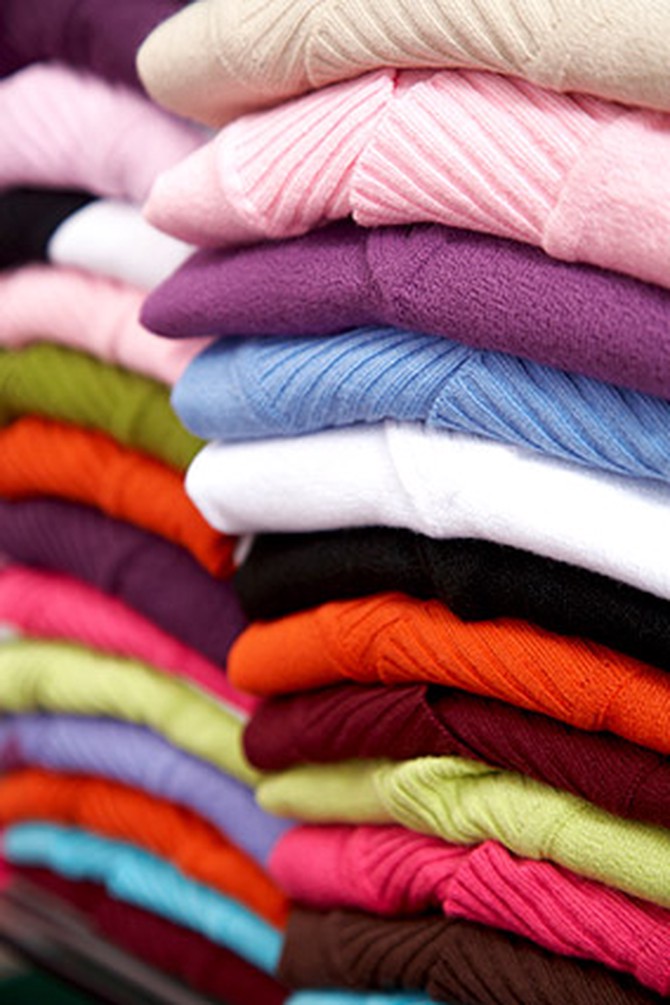
Photo: Thinkstock
Buying 5 Before You've Worn 1
You've finally found it: the midweight three-quarter-sleeve V-neck sweater you've been looking for all season. It's flattering. It's affordable. It goes with everything. And best of all, it comes in a rainbow of colors, so you want to buy a bunch of them. The problem is that while you know the sweater looks great now, you don't know how long it will last, how much it will shrink in the wash, or whether the fabric will pill, pull or fray. Until you've seen how the sweater wears, you're better off picking only your favorite shade.
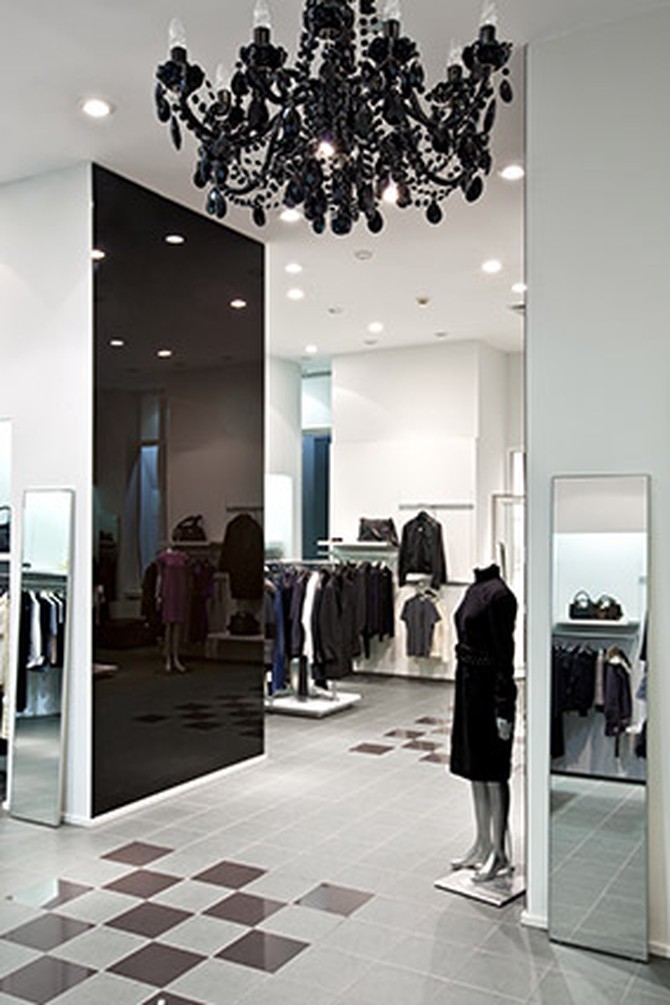
Photo: Thinkstock
Shopping in the Center of the Store
As O magazine creative director Adam Glassman explained to O editor-at-large Gayle King during their outlet shopping safari, how good a bargain you'll find depends on how well you navigate a store layout. "Managers know that it's human nature to automatically walk straight to the heart of a place, so things are pricier in that area," Glassman says. "This is why I always scout the perimeters first, especially the very back, because that's where the higher markdowns are. Then I scope out the middle section, and I finish with the accessories."

Photo: Thinkstock
Ignoring the Rule of 3
Your mother told you at one point that you should never buy something if it doesn't go with anything else in your wardrobe. She was right...sort of. Linda Lee, group vice president of Macy's by Appointment, the Macy's personal shopping service, says that in her experience, if a blouse goes with only one other item, her clients are not going to get enough wear out of it to make the purchase worthwhile.
Enter the Rule of Three. Whenever you're looking to buy an item, be it a pair of earmuffs or a pair of sandals, don't just ask yourself, "Does it go with something I own?" Instead, Lee says to ask yourself, "Can I think of at least three things I am going to wear it with?" If so, snap that up.
Enter the Rule of Three. Whenever you're looking to buy an item, be it a pair of earmuffs or a pair of sandals, don't just ask yourself, "Does it go with something I own?" Instead, Lee says to ask yourself, "Can I think of at least three things I am going to wear it with?" If so, snap that up.
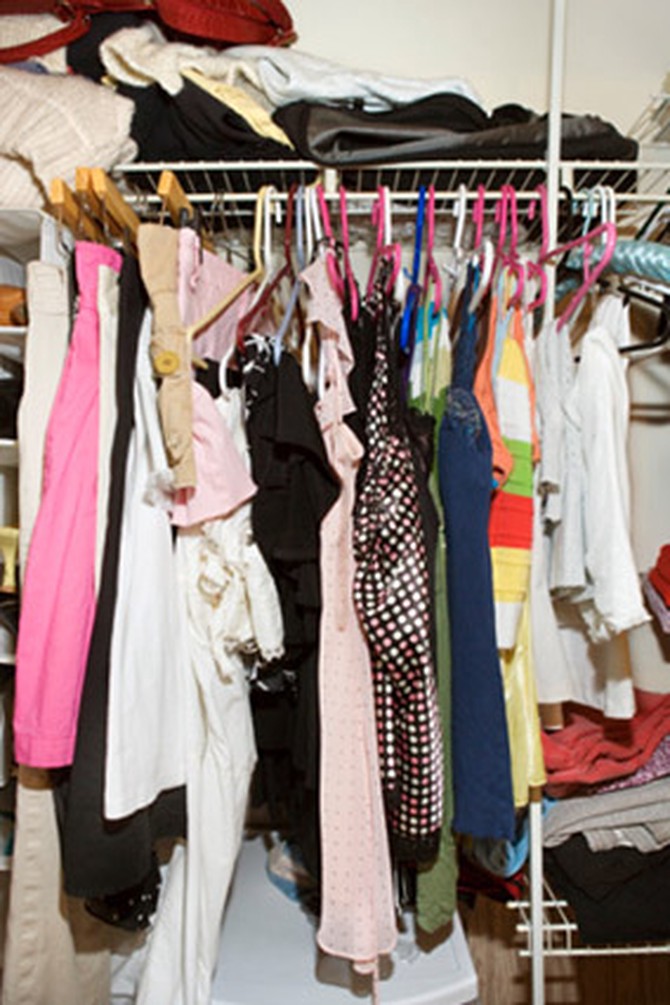
Photo: Thinkstock
Forgetting the Other 50 Percent
Nicole Chavez, stylist to celebrities such as Catherine Zeta-Jones, Rachel Bilson and Katherine Heigl, says the key to spending less money on clothes is to spend more time on wardrobe upkeep. How much? As many hours as you devote to shopping. So, whether you are at your go-to store every weekend or only buy things twice a year, cut your buying hours in half. Use your newly acquired nonshopping time to tend to the clothes you already have. Hem the pair of pants that you've been avoiding dealing with. Take the shoes that need new heel lifts to the cobbler. The repairs will cost you something, but it'll likely be less than what you'd spend during a day at the mall. Plus, when you're done, your leaner, cleaner, impeccably tailored wardrobe will feel fresh and new.
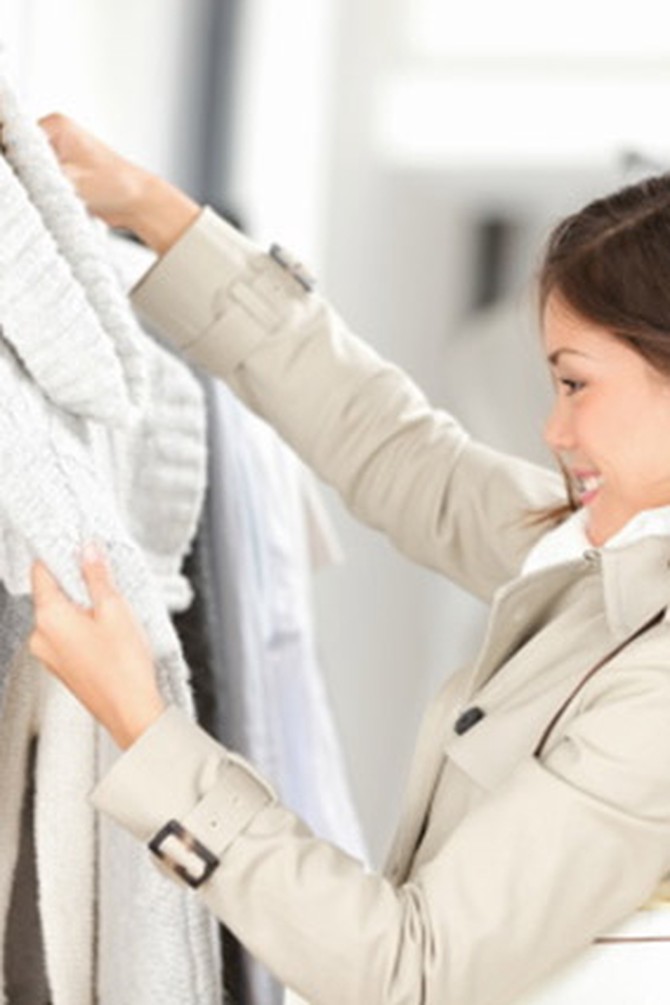
Photo: Thinkstock
Making It a Double—or a Triple
Will your husband/boyfriend/best friend/mother look at that sweater and ask, "Don't you already own a sweater just like that?" Bad news: You own a sweater just like that. More bad news: One is enough.
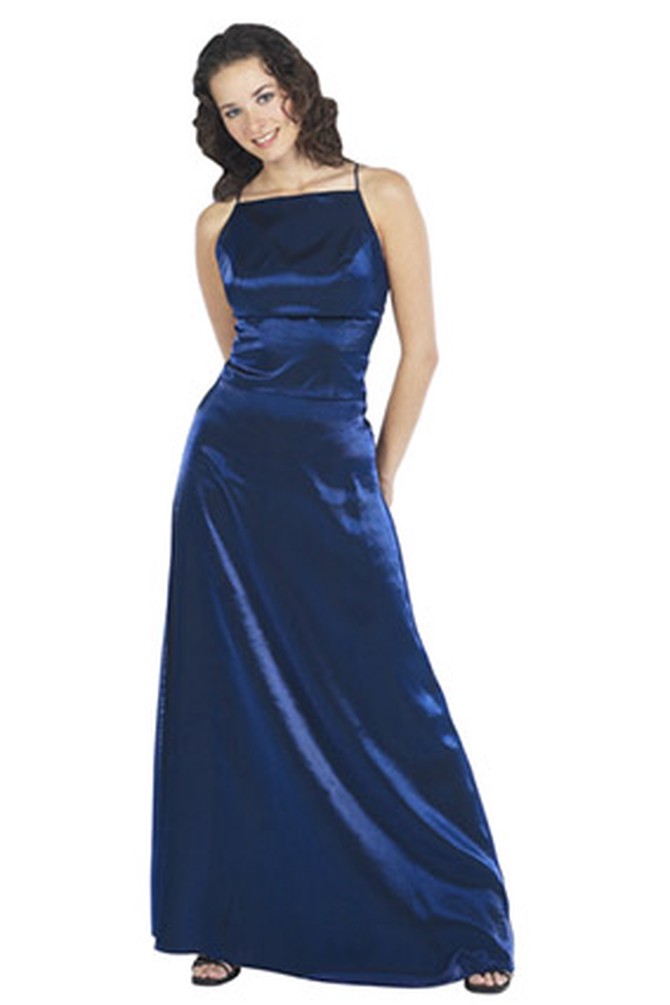
Photo: Thinkstock
Outfitting the Slightly Better Life
A navy floor-length sequined skirt is exactly the right thing to throw on with a casual top for a cocktail party, and, of course, you'll have one...soon. A silky blouse with an exquisite crossover neckline (that flops open oddly, but never mind) will be perfect for the board meeting...right? When you start telling yourself stories about where you're going to wear certain clothes, you're shopping for the life you want, or the one you think you'll have someday. It's great to dream about that life. It's not great to spend today's cash on it.
To save yourself an embarrassing incident during which that blouse does, in fact, gape at the neck and expose your bra during the aforementioned meeting, or the pain of having to give away that sequined skirt that you really love but have never worn, look out for your excuse words. When you hear yourself uttering hopeful things like "This might be the year!" or "Someday, I'll..." do not stop, do not pass go and do not spend $20, much less $200. Hang that item back on the rack.
To save yourself an embarrassing incident during which that blouse does, in fact, gape at the neck and expose your bra during the aforementioned meeting, or the pain of having to give away that sequined skirt that you really love but have never worn, look out for your excuse words. When you hear yourself uttering hopeful things like "This might be the year!" or "Someday, I'll..." do not stop, do not pass go and do not spend $20, much less $200. Hang that item back on the rack.

Photo: Thinkstock
Sticking to Safe Solids
A closet full of solid, neutral clothes seems like the best way to keep costs down. Think of all the possible matches. Except that these outfits are, well, sort of boring. If you don't own anything patterned or a single brightly colored piece, you'll feel compelled to buy extra stuff to spice up your wardrobe, and then you'll find yourself confused (and poorer) when another white blouse doesn't do the trick.
The solution? Purchase one or two really vibrant items. Chavez recommends a pair of leopard-print ballet flats, which she says are the key to making even the simplest outfit look lively. A flowered scarf or a bag in a rich magenta will also do the trick. When paired with your basics, you'll have so many combinations that you'll never want to shop again. (At least, for now).
Next: 4 steps to beat credit card debt
The solution? Purchase one or two really vibrant items. Chavez recommends a pair of leopard-print ballet flats, which she says are the key to making even the simplest outfit look lively. A flowered scarf or a bag in a rich magenta will also do the trick. When paired with your basics, you'll have so many combinations that you'll never want to shop again. (At least, for now).
Next: 4 steps to beat credit card debt
Published 11/01/2012

